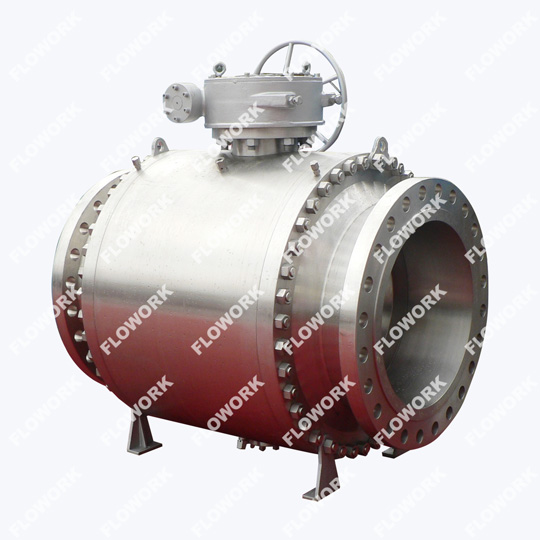
1、You are in restricted area and need password. Please Contact us to obtain documents.
2、PasswordIf you have any questions about quotation or cooperation, please feel free to send us inquiry. Inquiry us
| Size: | 2"-24" |
| Pressure: | 150LB-2500LB |
| Body Material: | CD3MNWCuN, CW2M, Monel, CN7M, 20#Alloys, 4A, 5A, 6A, F51, F55, etc. |
| Seal Material: | PEEK, RPTFE, PTFE, DEVLON, HNBR, NYLON, AFLAS, STELLITE,etc. |
| Connection Type: | Flanged, Butt Welded, Socket Welded, NPT |
| Operation: | Hand lever, gear operated, pneumatic, motorized |
| Face to Face Dimension: | ASME B16.10 |
| Flange End Dimension: | ASME B16.5 |
| Butt Welded Dimension: | ASME B16.25 |
| Design and Manufacture: | API 6D |
| Test Standard: | API 598, API 607, API 6FA, ISO 15848-1-2 |
Material: duplex stainless steel, alloy 20, nickel alloy, hastelloy C, CD4MCU, etc.
With good performance of anti pitting, crevice corrosion, stress corrosion and corrosion fatigue
Suitable for harsh medium environment conditions (such as seawater, flow with high chloride content)
Seat selection: RPTFE, PEEK, DEVLON and other polymer materials
PTFE or graphite packing seal as standard
Meets HIC/SSC requirements
The term "wog" on a ball valve usually refers to the pressure rating of the valve. Specifically, it stands for "Water, Oil, Gas," and is used to indicate that the valve is suitable for use with these three common fluids. The letters "WOG" are often followed by a number, which indicates the maximum pressure that the valve can safely handle in psi (pounds per square inch), ball valve manufacture.
For example, if you see "WOG 1000" on a ball valve, it means that the valve can handle a maximum pressure of 1000 psi when used with water, oil, or gas. It's important to note that the "WOG" rating only applies to these specific fluids, and the valve may have a different pressure rating for other types of fluids or applications.
Yes, ball valves are bidirectional, which means they can be used to control the flow of fluid in either direction. This is because ball valves have a spherical ball inside the valve body that rotates 90 degrees to either block or allow flow through the valve. The ball itself is not influenced by the direction of the flow, so it can be used in either direction without affecting its performance. However, it is important to note that some ball valves are designed to have a preferred flow direction for optimal performance, and this should be taken into consideration when installing them, gate valve manufacture.
In general, ball valves can be installed upside down, but it is not recommended. The reason is that ball valves are designed to operate with the ball in a particular orientation, typically with the handle or lever on top or in the upright position.
If the valve is installed upside down, it may still function, but it could lead to reduced performance or reliability. For example, if debris or contaminants get into the valve, they may settle on the ball or valve seat, leading to leakage or reduced flow. Additionally, some ball valves have seals or bearings that could become damaged if the valve is installed upside down, leading to premature failure, bronze valve.
It's always best to follow the manufacturer's instructions and recommendations when installing any valve to ensure optimal performance and longevity. If you're unsure about how to install a ball valve or have any concerns about the orientation, it's best to consult with a qualified plumber or valve technician.
Yes, ball valves can be used for natural gas applications. Ball valves are commonly used in the oil and gas industry for various applications, including natural gas transportation and distribution systems, api 6d ball valve. However, it is important to select the appropriate type of ball valve for the specific natural gas application to ensure safety and optimal performance. The material of the valve, the pressure rating, and the valve's design should all be carefully considered when selecting a ball valve for natural gas applications. It is also essential to follow proper installation, operation, and maintenance procedures to ensure the safe and efficient operation of the valve, carbon steel gate valves.
Yes, a ball valve can be used to control flow, high temperature gate valves. Ball valves are commonly used in industrial and residential applications to control the flow of fluids. They are designed with a ball inside the valve that can be rotated to either block or allow the flow of fluid through the valve. By turning the ball partially, the amount of fluid that can flow through the valve can be adjusted. This makes ball valves useful for controlling the flow rate of fluids in a system, forged ball valve. However, it is important to note that ball valves are not as precise as other types of valves, such as globe valves, when it comes to controlling flow. If precise control of flow is required, a different type of valve may be more appropriate.
Send us a message if you have any questions or request a quote.

A reply from our experts within 24 hours

The latest detailed product catalugue

One-stop service for your project